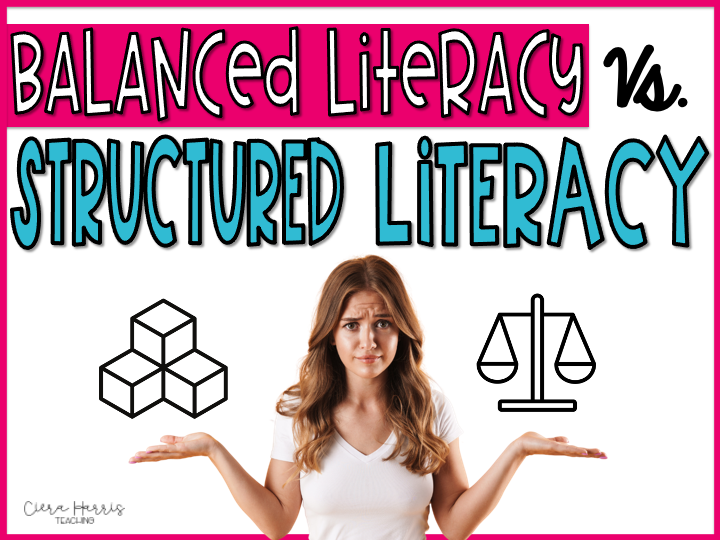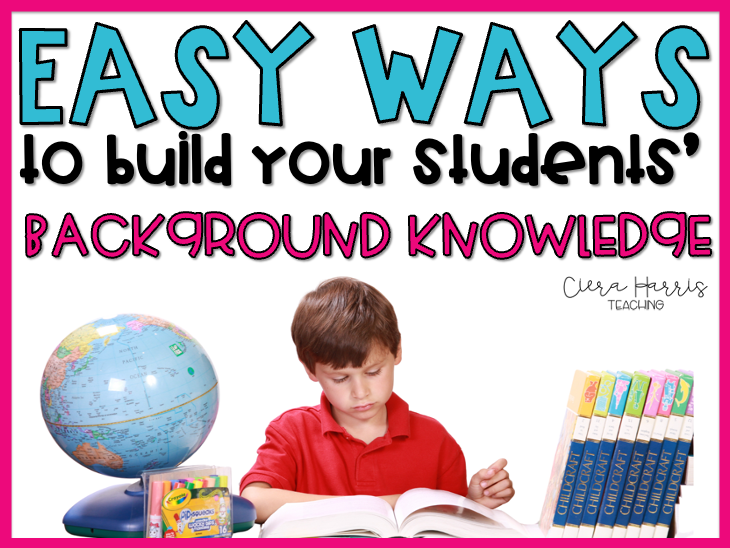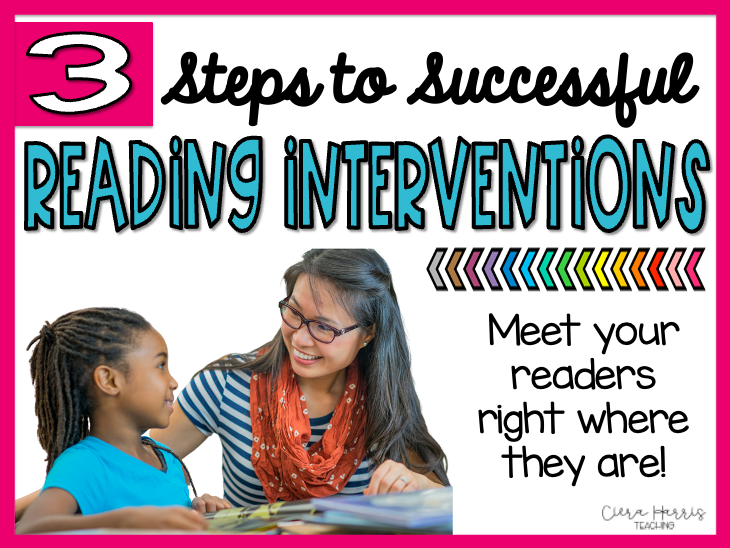Do you ever feel like you get educational whiplash being a teacher? I do! The programs we should teach and the strategies we should use are constantly changing. It’s insane and hard to figure out where to look, what to do, and who to trust with all the changes. Honestly, I feel like this is happening with all the Science of Reading research coming out. Specifically, I mean there are two different structures of literacy that keep going back and forth. On one hand, it is balanced literacy. On the other, it is structured literacy, which the Science of Reading research supports. Since this all gets confusing, let’s explore balanced literacy vs. structured literacy.
Want to watch the video instead? Check it out below! Make sure to subscribe to get updates on all new content!
Common Goal
When examining balanced literacy vs. structured literacy, both aim to improve literacy outcomes. They both want to help students become fluent, independent readers and writers. However, they take very different approaches.
Structured Literacy
This is a systematic and explicit approach to teaching reading and spelling. There are all the key components of literacy, including phonemic awareness, phonics, fluency, vocabulary, and comprehension. Each of these is explicitly taught. Additionally, there are also concepts, such as morphology and syntax, that are within lessons. This approach is very effective for students with learning disabilities and struggling readers because it focuses on a word-driven approach to literacy.
Check out the Phonics Worksheets to help 2nd-4th graders build these essential skills!
Balanced Literacy
This approach integrates various methods, such as guided reading, shared reading, and read alouds. Additionally, there is time for independent reading, phonics instruction, and word structures. Essentially, this approach focuses more on the methods behind everything rather than true explicit teaching. Due to this, this approach offers more flexibility to cater to a diverse range of students because it encourages a love of reading and writing.
Breaking Down the Differences
At this point, you may be wondering why the Science of Reading supports Structured Literacy more. While both approaches keep the goal of students in mind, there are significant differences between the two.
Structured literacy emphasizes explicit and systematic teaching, especially phonics and word knowledge. Balanced literacy has a more holistic approach. It integrates all the different methods and hopes to keep the bigger picture in mind. The issue with this is that when we always look at the bigger picture, it’s hard to determine the gaps in learning. In other words, structured literacy looks at the entire foundation of the reader and builds from there.
When examining balanced literacy vs. structured literacy, another difference is the application in the classroom. In structured literacy, there are sequential lessons that are more teacher-driven. Balanced literacy is more student-driven because it emphasizes choice and exposure to authentic text. While this is not bad, reading is complex. To ensure we build the skills of readers, there cannot be gaps anywhere. Students need a solid foundation.
Check out the Reading Comprehension Mini Bundle for excellent activities to help support students!
The Science of Reading
So, what does the Science of Reading actually say about balanced literacy vs. structured literacy? Let’s get into that a bit. The emphasis on phonics and explicit instruction aligns more with structured literacy. This is because our early readers and students who struggle need explicit instruction on the essential components of literacy. This allows students to have a solid foundation to decode words, break them apart, and understand word parts.
On the flip side, balanced literacy emphasizes the importance of comprehension. It exposes students to various texts to build their exposure and understanding. While this is essential, and both approaches are valid, the Science of Reading does support the structured approach more.
Recommendation
Are you still torn on figuring out balanced literacy vs. structured literacy? I totally understand! So, here are my recommendations. Consider the needs of your students. Some may benefit more from a systematic approach, while others may thrive in a balanced literacy environment. So, look at your students and what their needs are. If they have a strong foundation in phonics from preschool and kindergarten, a balanced literacy approach may be great. However, if there are a lot of gaps to fill, a structured literacy approach may better support students.
Additionally, consider integrating elements from both approaches. While structured literacy builds a foundation, balanced literacy enriches the overall learning experience. While figuring out balanced literacy vs. structured literacy, check out professional development and continuous learning.
Ultimately, teachers want students to be independent, confident readers and writers. By understanding balanced literacy vs. structured literacy, teachers can make informed decisions to best support the needs of their students.
If you do not want to miss any of the upcoming lessons, join my email list to be notified of all the interactive lessons coming up! By joining the email list, you will receive freebies for blog exclusive subscribers!
Grab the Ultimate Comprehension Toolkit!








